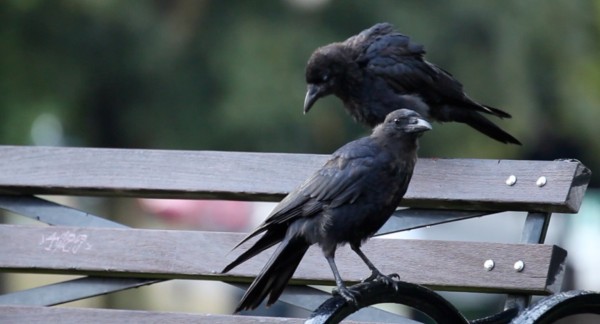It’s been noted for a number of years now that urbanization has an effect on various animal and plant species — driving changes in various qualities or traits.
Spiders in cities are known to generally be larger than their compatriots in rural areas, for instance (possibly due to reduced predation and higher temperatures, etc); salmon near urban areas are smaller than salmon in rural locations; birds in urban areas exhibit very different social behavior than those elsewhere; etc.
How far do these changes go though? If human activity is resulting in large changes to natural ecosystems, and trait expression in various species, what does that mean exactly?
According to new work from the University of Washington College of Built Environments’ Urban Ecology Research Lab — just published in the journal Trends in Ecology & Evolution — it means that there may be “significant implications for ecological and human well-being”.
According to Professor Alberti it was until only very recently an assumption that evolutionary changes would be too slow moving to affect ecological processes in any significant way, in so immediate a way anyways. This assumption has meant that evidence has been prevented from coming together “in a way that can only emerge through a cross-disciplinary lens”.
“We now have evidence that there is rapid evolution. These changes may affect the state of the environment now. This is what’s called eco-evolutionary feedback.”
“Cities are not simply affecting biodiversity by reducing the number and variety of species that live in urban habitats,” Alberti noted. “Humans in cities are causing organisms to undergo accelerated evolutionary changes that have effects on ecosystem functions such as biodiversity, nutrient cycling, seed dispersal, detoxification, food production and ultimately on human health and well-being.”
In her new research paper, Alberti systematically reviews “evidence of human signatures, or documented examples of human-caused trait changes in fish, birds, mammals and plants, and their effects on ecosystem function”.
A recent press release provides more:
In addition to the growing spiders and shrinking salmon, she cites earthworms with increased tolerance to metals, seeds of some plants dispersing less effectively and a type of urban mouse that is a “critical host” for the ticks that carry Lyme disease, leading to spikes in human exposure to the illness.
Songbirds are becoming tamer and bolder and also are changing their tunes to ensure their acoustic signals are not lost in the noisy urban background. European blackbirds are becoming sedentary and have changed their migratory behavior in response to urbanization.
Humans in cities cause these changes through a variety of ways, Alberti said. Our urbanization alters and breaks up natural vegetation patterns, introduces toxic pollutants and novel disturbances such as noise and light and increases the temperature. Human presence also changes the availability of resources such as food and water, altering the life cycle of many species.
Amongst the questions raised by the work, according to Alberti anyways, are:
• Is urbanization moving the world closer to an environmental tipping point on the scale of the Great Oxidation Event that introduced oxygen into the atmosphere more than 2 billion years ago?
• Might different patterns of urbanization alter the effect of human action on eco-evolution?
“Ecosystems in urban environments are a sort of hybrid,” she noted. “It is their hybrid nature that makes them unstable, but also capable of innovating.”
“We can drive urbanizing ecosystems to collapse — or we can consciously steer them toward a resilient and sustainable future. The question is whether we become aware of the role we are playing.”
Image Credit: Screen Capture
